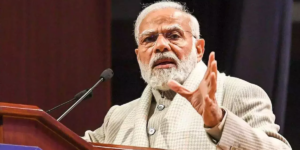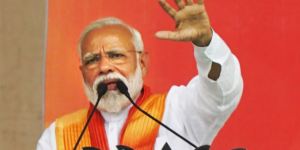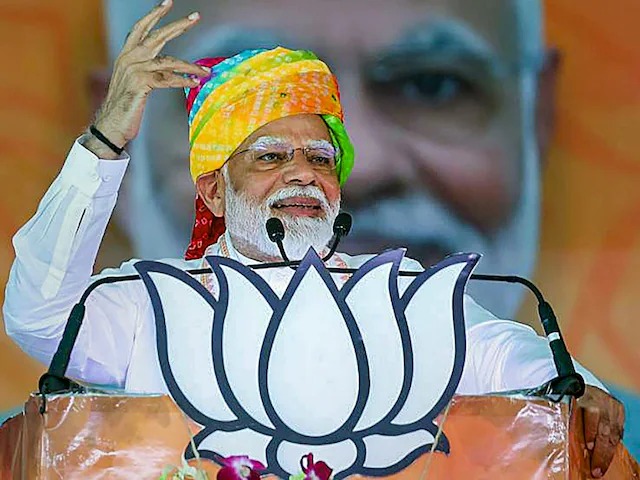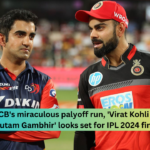Prime Minister Narendra Modi’s political rallies have always been a significant aspect of Indian electoral campaigns, serving as platforms for articulating policies, connecting with the electorate, and garnering support for his party. In Maharashtra, a key state in Indian politics, the frequency of Modi’s rallies doubled in 2024 compared to 2019. This surge warrants a comprehensive examination to understand the underlying reasons, implications, and broader political dynamics at play.
Factors Driving Increased Rallies:
1. Political Landscape Shifts:
– Maharashtra’s political landscape witnessed significant shifts since the 2019 elections. Changes in alliances, defections, and realignments reshaped the political dynamics, necessitating a more aggressive campaign strategy from the ruling party.
– The Bharatiya Janata Party (BJP), under Prime Minister Modi’s leadership, faced challenges from opposition parties, regional players, and even dissensions within its own ranks. Increased rallies may signify a proactive approach to consolidate support and counter emerging threats.
2. Focus on State-Level Issues:
– Maharashtra, being one of India’s most populous states with diverse socio-economic challenges, requires tailored governance and policy interventions. Modi’s increased presence through rallies could indicate a concerted effort to address state-specific issues and engage with local concerns.
– By directly interacting with voters through rallies, Modi aims to showcase his administration’s commitment to addressing Maharashtra’s developmental needs and garnering grassroots support for his party’s agenda.

3. Strategic Electoral Calculations:
– The doubling of rallies might reflect meticulous electoral calculations aimed at maximizing the BJP’s electoral prospects in Maharashtra. With the state contributing significantly to the BJP’s national mandate, intensified campaigning becomes imperative.
– Modi’s rallies serve as catalysts for energizing party workers, mobilizing supporters, and consolidating the party’s electoral base. The increased frequency could be a strategic maneuver to outmaneuver opponents and secure a decisive victory in key constituencies.
4. Communication and Outreach:
– In an era characterized by information overload and rapid communication channels, political leaders must adopt multifaceted communication strategies to reach diverse voter segments effectively.
– Modi’s rallies offer a direct, personalized communication channel wherein he can articulate his vision, achievements, and future plans to a captive audience. The surge in rallies may reflect a recognition of the enduring efficacy of traditional campaigning methods amidst evolving digital landscapes.
5. Response to Opposition Mobilization:
– Opposition parties in Maharashtra, particularly the Shiv Sena-NCP-Congress alliance, have intensified their campaign efforts, posing a formidable challenge to the BJP’s dominance.
– Modi’s increased rallies could be a strategic response to counter opposition mobilization, neutralize anti-incumbency sentiments, and reaffirm the BJP’s electoral relevance in Maharashtra’s political discourse.

Implications and Future Outlook:
1. Electoral Momentum:
– The surge in Modi’s rallies underscores the BJP’s intent to sustain and amplify its electoral momentum in Maharashtra. By maintaining a high-profile presence, the party seeks to dominate the narrative, capture undecided voters, and consolidate its electoral gains.
– However, sustaining this momentum beyond rallies necessitates effective ground-level mobilization, robust organizational structures, and cohesive messaging to translate rally attendance into tangible electoral outcomes.
2. Voter Engagement and Participation:
– Modi’s rallies serve as potent platforms for engaging with voters, galvanizing party cadres, and mobilizing support. The increased frequency of rallies indicates a concerted effort to amplify voter participation, especially among demographic segments crucial for electoral success.
– Nevertheless, the true measure of impact lies not only in rally attendance but in converting enthusiasm into actual votes on polling day. Therefore, the BJP must complement rally-centric strategies with targeted outreach, issue-based campaigning, and voter education initiatives.
3. Opposition Dynamics:
– The BJP’s intensified campaign in Maharashtra is likely to trigger reactive responses from opposition parties, leading to heightened electoral competition and polarization.
– As the electoral landscape becomes increasingly competitive, opposition alliances may recalibrate their strategies, intensify their outreach efforts, and leverage local grievances to challenge the BJP’s dominance.
– Thus, while Modi’s rallies bolster the BJP’s electoral prospects, they also catalyze a dynamic interplay of political forces, shaping the contours of Maharashtra’s electoral battlefield.














